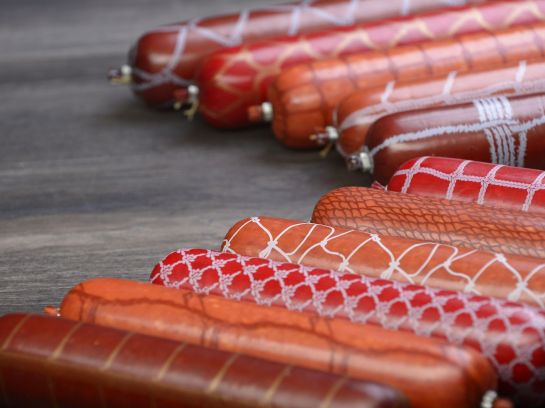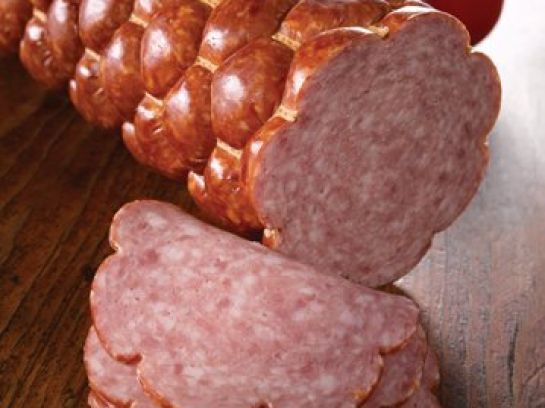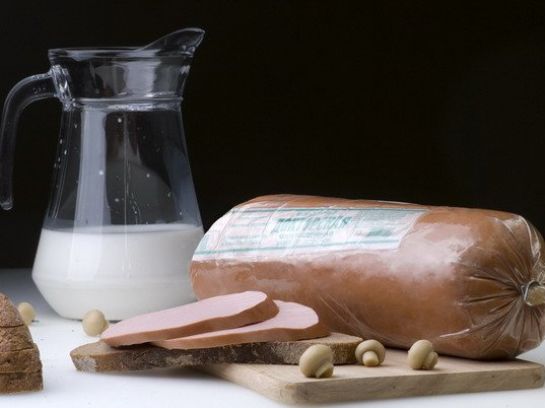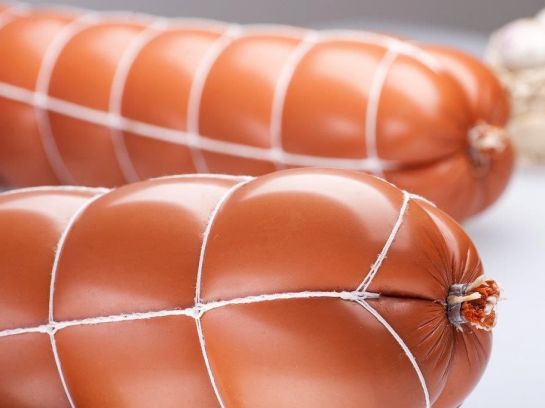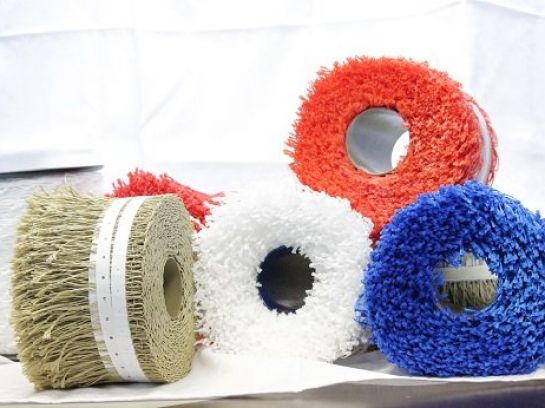Pentaflex Shape

- is a multilater polyamide casing for packing hams and sausages pressing in moulds.
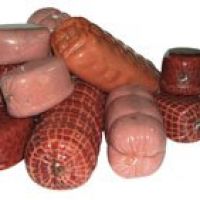
SCOPE OF USE:
• staffed sausages.
FEATURES AND BENEFITS:
Casing is designed taking into account specific character of manufacture of molded sausage production and aimed for packing hams and sausages pressing in moulds. Pentaflex-Shape® is characterized not only by excellent overstuffing up to 15-25%, but it also repeat every outline of product with any consistency of builder. Casing accurate outline as specified curves of cooking mould as thin jaggies and structure of forcemeat, designed for packing and cooking hams with high percent of output of production - 150% and more.
Benefits:
• high barrier properties;
• elasticity;
• mechanical strength;
• biological inertness;
• heat resistance;
• increase shelf-life of products.
Calibers: 50 mm, 60 mm, 65 mm, 70 mm, 75 mm, 80 mm, 100 mm.
Offered color spectrum: smoky (Sh-5-BN-04), smoky M (Sh-M-02), gold (Sh-2-GD-02), pink (Sh-6-PI-01), chestnut M (Sh-M-01), transparent (Sh-1-CL-01).
Term of storage of products in casing
Products, packed in Pentaflex-Shape® casing, have shelf-life up to 60 days (by temperature interval +2°C-+6°C), which is confirm by the results of researches and by the State sanitation service, given in Ukraine and Russia.
Recimmendation on application
Storing at the production facilities
They should be handled with caution and proper care to avoid hitting and falling down.
Casing is frostproof, stand temperature -20°C.
Casings that have been stored at temperatures lower than 0C should be kept at a room temperature for not less than one day before using.
Preparation of Casing for production of sausages
In case of using the shirred casings, it is necessary that shirred sticks be submerged completely into the water at a temperature of 18-25C and kept there for at least 40 minutes.
Consumption of the casing should be calculated for the volume of sausage production. In case there is some casing left after production, it should be left in cold water and used within 24 hours.
Recommendations on technological peculiarities of sausage production process using polyamide ring casings
In view of the fact that casing is used for hams with high output of ready production, it is necessary to observe the requirements of technological instruction on its production, especially on using water retention additions, which are used at stuffing of hams. It will ensure high output of production, exclude possibility of jelly formation and detachment of casing during storage of product.
Forming
2. Before forming the ham it is necessary to select the right diameter of the casing, which will fit the sizes of the form. It is ne-cessary to take into account the fact that perimeters of form and casing cross-section should be equal. By inserting the given values into the formula suggested below we can calculate the necessary diameter of the casing taking into account the projected percentage of overstuffing.
EXAMPLE
l = 31 sm
h = 9,5 sm
m = 11,4 sm
1. Perimeter of the form totals:
11.4+11.4+9.5+9.5=41.8 cm.
2. Cross-sectional perimeter of the casing, which should fit the given form totals:
P x D = 41.8 cm (D – diameter of the casing, P=3,14);
D = 41.8 / P = 13.3 cm (133 mm .).
Cross-sectional perimeter also includes percentage of overstuffing:
With 10% of overstuffing the nominal diameter will equal 119.7 mm;
With 15% of overstuffing the nominal diameter will equal 113 mm;
With 17% of overstuffing the nominal diameter will equal 110.3 mm.
These calculations are theoretical, therefore, when selecting diameter of the casings it is necessary to take into account all the necessary parameters (percentage of overstuffing, sizes of forms, etc).
Stuffing and clipping
The casing may for used for performing the stuffing on automated («ALPINA», «POLI-CLIP», «TEHNOPACK»), as well as on semi- automated types of equipment. The casing can also be used in manual stuffing.
Placing into forms
Thermal processing
Stage 2 – After cooling with water the hams are delivered to refrigerating chambers for final cooling in order to lower the temperature inside the products to +4+6°C.
After the full cooling process is complete, the hams are extracted from the forms. If you are using Pentaflex-Shape® casing, the secondary packaging is not necessary. Packaged into the given casing the hams are delivered to the trading network.
Slicing and removing the casing off the sausage stick
In order to prevent tearing and decrease the tension on the casing during cutting of sausages, it is advisable to cut both clips first.
Packing and storing of the sausages
In the retail the sausage sticks should be taken out of shipping containers and stored into the refrigerators, showcases and so on.
